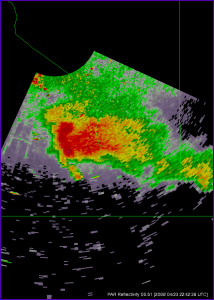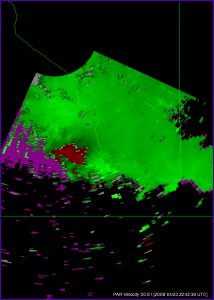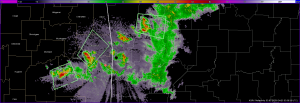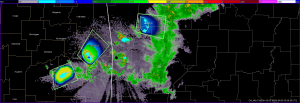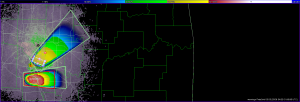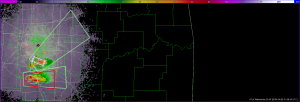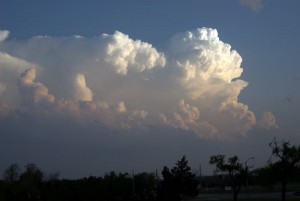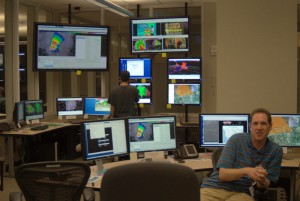The first few hours of the day was spent training Patrick Burke and Angelyn Kolodziej with an archived PAR case. As would a WFO participant would do, they provided feedback on the case, compared the output to KTLX data, and filled out a survey. At the same time, I was testing out new fixes on the gridded warning software. Most of the bugs have been resolved, but a few remain and seem attainable before actual operations begin next Monday.
Our Intensive Operations Period (IOP) went from 5-8pm. During this time, we collected PAR data on a non-tornadic supercell which developed about 20-30 miles south of Norman:
We also loosely operated the gridded warning project over a number of domains, including Central Oklahoma, one a supercell NE of Midland TX, and a large bow echo complex that moved from west of FTW into the DFW metroplex. During this time, I was still testing the software for various bugs, and found one remaining issue that appears we can have fixed soon. Mike Magsig and Patrick Burke operated the software during this time. After the IOP, we had a great discussion from Patrick’s warning forecaster perspective on how probabilities currently factor into his warning decision making. He will be adding his thoughts to this blog in the next day or two.
Greg Stumpf (EWP Weekly Coordinator, 21-25 April)

